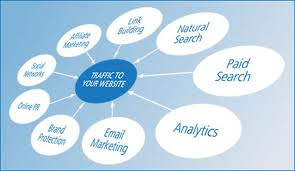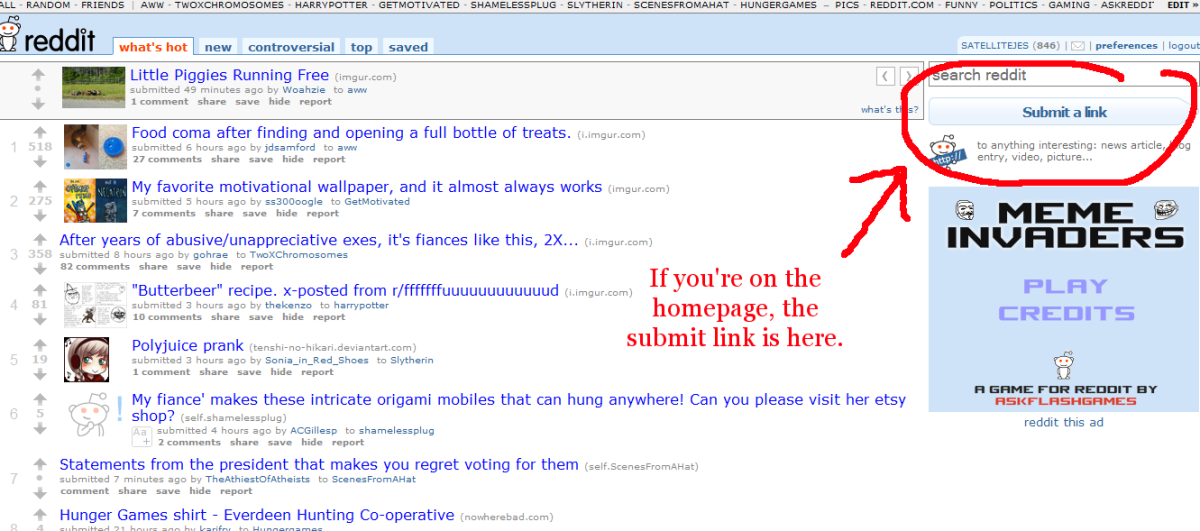4 Ways to Attract Traffic to Your Website- and the One Way that Works Best
How to Attract Online Traffic

Generating Online Traffic is Big Business
If you own a website or have posted even a single piece of online content, you know that getting traffic to your website or blog post is a big thing. After all, no one wants to post content that is never read or commented on. Furthermore, because many of today's websites and blogs are monetized (i.e., set up to earn money through PPC, AdSense, etc.), no traffic means no money being generated by visitor product clicks and/or subscriptions.
Website owners, bloggers and affiliate marketers have different ways of generating the much-needed traffic on which their livelihoods rely. Some of these methods work very well- that is, until Google catches on and sandboxes the offending website and/or blog. Other methods do manage to generate initial traffic but then result in significant email list opt-outs and general visitor disinterest. Finally, there is one tried-and-true traffic-generating method that takes additional effort and time, but generates significant visitor traffic, as well as sales leads and conversions.

4 Common Ways for Attracting Online Traffic
In my Hub entitled "Understanding eCommerce: The Online Sales Funnel", I discussed traffic generation as the first step to achieving sales leads and conversions. Many e-marketers try to attract a given amount of traffic to their website in order to make sales on their advertised products. Since the average conversion rate of a typical website is only 2-4%, that means that for every 2-4 product sales, you need to generate 100 visitors. If you are relying on your product sales to generate or even supplement your yearly income, this means that you will need to attract thousands (if not tens or even hundreds of thousands) of visitors to your website in order for your operation to be profitable.
Unfortunately, attracting traffic is easier said than done. According to the 2011 Blogging Statistics survey conducted by Technorati and BlogPulse, as of July 2011 there are now 164 million blogs in existence. This is a tremendous increase from just 3 million blogs back in July 2004. However, nearly half of the blogs currently in existence generate fewer than 1,000 visitors per month. Another quarter of so of blogs generate only up to 5,000 visitors per month. This means that most blogs generate very few sales leads and conversions. Of course, not every blog is in it to make money, but if it is, it has some incredible odds to play against...
1. Method #1: SEO
However, getting back on the topic of simply generating traffic, there are several common ways that may website owners and bloggers use (here are 7 easy SEO tips). The first one is SEO, or search engine optimization. SEO is the process of having your website and its content readily found by search engines such as Google and Yahoo when visitors type in certain search terms (i.e., keywords). SEO is imperative if you want your site to rank well in the search engine results pages (SERPs) of search engines. Many companies and businesses pay big money to retain SEO consultants that promise to place their website or blog at the #1 spot on Google's or Yahoo's SERP.
While SEO and the utilization of appropriate keywords is a well-known method by which your website can take top placement in the SERPs, it is also cumbersome to rely on. SEO must be adjusted almost daily in order to remain fully recognized by search engines such as Google. Furthermore, because search engines like Google often reconfigure their search algorithms, sites that were previously well-positioned on the SERP often fall in their ranking.
Many website owners and bloggers resort to so-called "black hat" SEO techniques in order to quickly achieve and then maintain a top position on the SERPs. Keyword stuffing, writing repetitive and/or nearly undescipherable content, and setting up mirror sites which point to the main website or blog are all black hat methods by which people try to attain high SERP rank. However, once Google or another search engine detects the offending website or blog, it quickly takes it out of the top search pool or even off the SERPs altogether. This results in the offending website witnessing its online traffic levels grind to a halt. The lesson here is that black hat SEO techniques do not work and will at some point get discovered and penalized.
2. Method #2: PPC Ads
Pay-Per-Click or PPC advertising is another common method by which many e-marketers try to, in essence, buy traffic. With PPC ads, visitors are shown ads that lead them to either a website, blog or a website/blog landing page. If the ad is clicked on, the affiliate network charges the e-marketer a discrete amount of money for leading that visitor to the given website or blog. PPC ad prices are typically determined by keyword popularity; the more popular the keyword used to place the ad, the higher the per-click price. Google AdWords is one example of a PPC advertising platform. Facebook Ads is another popular PPC platform, allowing you to not only bid on popular keywords for your particular industry or business, but to also target your ad for a specific population demographic; for example, you can create a Facebook Ad that will only be shown to unmarried women in the 53711 zip code.
PPC and other advertising can certainly get the word out about your website or blog. However, if PPC advertising is all you are using to attract traffic, that traffic will be of low quality and probably not result in many sales leads and conversions. Your might even encounter an issue with competitors clicking on your ads to drive up your marketing costs.
Method #3: Social Media
Another method of website/blog traffic generation is social media marketing. According to statistics presented by InfusionSoft, a CRM (customer relationship management) firm, at least 75% of consumers use social media to learn about products and services. Thus, nearly every business has jumped on the social media bandwagon, setting up Twitter, Facebook and LinkedIn accounts. While using such methods can generate traffic to your website or blog, they need to be properly managed. Social media posts and updates need to be added on a daily or at least weekly basis. Comments, and especially complaints, must be immediately addressed. One's reputation is always on the line with social media, since product/website commentary and/or complaints can go viral in an instant.
Many website owners and bloggers treat social media as just another advertising platform. This is a big mistake and typically leads to visitors "unliking" the business or blog page, blocking the offending site, and even spreading bad community vibes regarding the site/blog. Website owners and bloggers must understand that, while sending social media subscribers an occasional coupon or promotional message is OK, it should not be viewed as the norm. The key purpose of social media is just that- socialization. Visitors go to Facebook or Twitter not because they are looking to buy something but because they want to chat with their friends, get advice, and maybe play an online App. However, a business or blog that maintains an ongoing conversation with its subscribers can eventually benefit from increased traffic and its resulting sales and conversions.
Method #4: Email Marketing
Finally, many website owners and bloggers use email marketing to inundate their site subscribers with spammy, overhyped and marketing-orientated emails. Consumers today are literally buried in spam emails and ads. Most consumers don't even see Internet ads, having been conditioned to delete them as fast as possible. Others have installed anti-spam software to filter their emails automatically. The bottom line here is the following: if you think that constantly hitting your subscribers with email ads and spam is going to generate quality traffic, think again. Subscribers who are constantly sent spam emails will inevitably opt-out of your email list. Others may not opt-out, but they will simply stop opening your emails. You will eventually see your email open rates plummet from 50-70% to 40% to even 5%. Even if you have 100,000 subscribers on your email list, what good is it if only 5% of them respond to your emails? In effect, then, you have only 5,000 subscribers.
So, how can you get traffic to your website or blog without annoying and/or alienating potential customers?

Generate Traffic by Providing Value
Better Method: Provide Value-Driven Content
Consumers today are looking for something that will educate and enrich their lives. They want good information that will teach them something useful, advise them about a product/service, or at the very least provide an account of how doing/buying something made your own life better or worse. Even a good laugh about something that occurred in your own personal life is better than a hyped-up email containing no real information and lots of over-hyped affiliate links. Thus, website content, blog posts and subscriber emails should first attempt to focus on providing something of value to the reader rather than just selling a product. Content that is value-driven will be noticed; white papers, ebooks, pillar articles and how-to's are immensely popular and draw tremendous online traffic. Case studies, podcasts, webinars and videos can also gain large numbers of followers and fans.
Better Method: Engage Your Readers
Subscribers and readers may also be engaged in the online discussion. For example, an email can be sent to your subscribers that asks them to describe what they feel about a particular product or service, or how they have dealt with a particular life challenge (for a good example, please see my own personal blog post on my money issues with long-term care and nursing homes). Engaging content makes your readers feel that they matter and can be part of the ongoing discussion. However, the real value is yours: readers comments and suggestions are direct feedback that you can use to make your future content even more engaging and valuable. Reader feedback also helps take the guesswork out of what you should be writing and/or posting; as we all know, writer's block can be a very common issue for many website owners and bloggers.
Better Method: Build Credibility
Providing your readers with value helps build your credibility with them. Credibility really is everything in the online scheme of things, generating traffic to and interest in your site, as well as inevitable product sales and referrals. Yes, I did say product sales. The point here is that, when your readers know and trust you, they will also trust your product recommendations. You can prepare them for the inevitable product recommendation by stating that you have tried a particular product or that one of your trusted affiliates has tried it or that you have heard good things about the item. Again, being absolutely truthful about your personal experience with a product is key. You can then leave the final decision to try/buy the item up to your readers, perhaps throwing in a product discount or coupon along the way. Nothing too gimmick-like should be added. Pressure tactics are also a no-no. Your readers and subscribers will appreciate your no-pressure approach and reward you with site traffic, referrals, and the inevitable conversions.
Additional reading:
Click edit above to add content to this empty capsule.
Understanding eCommerce: The Online Sales Funnel
How to Better Capture Sales Leads Into Your Sales Funnel








